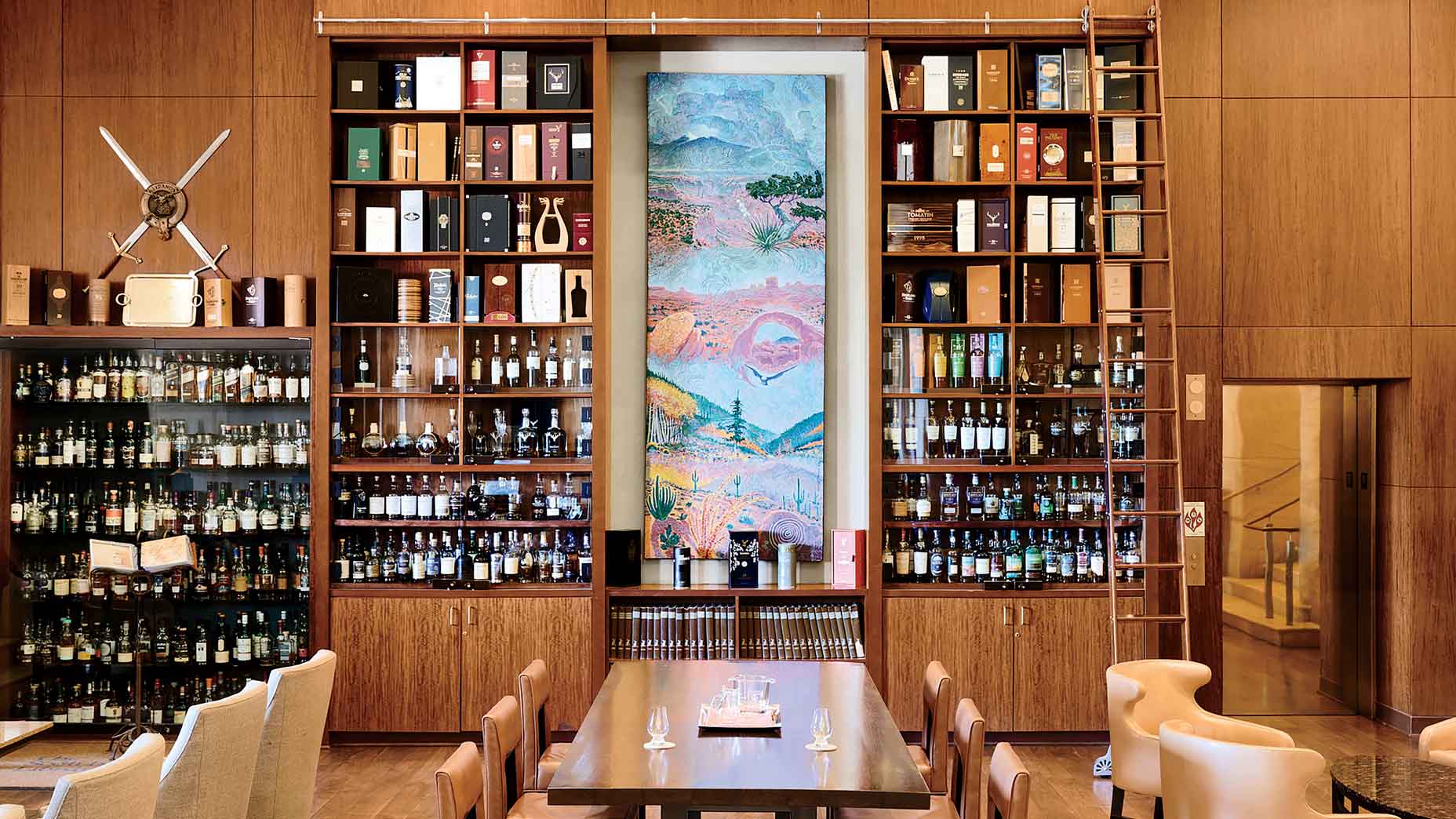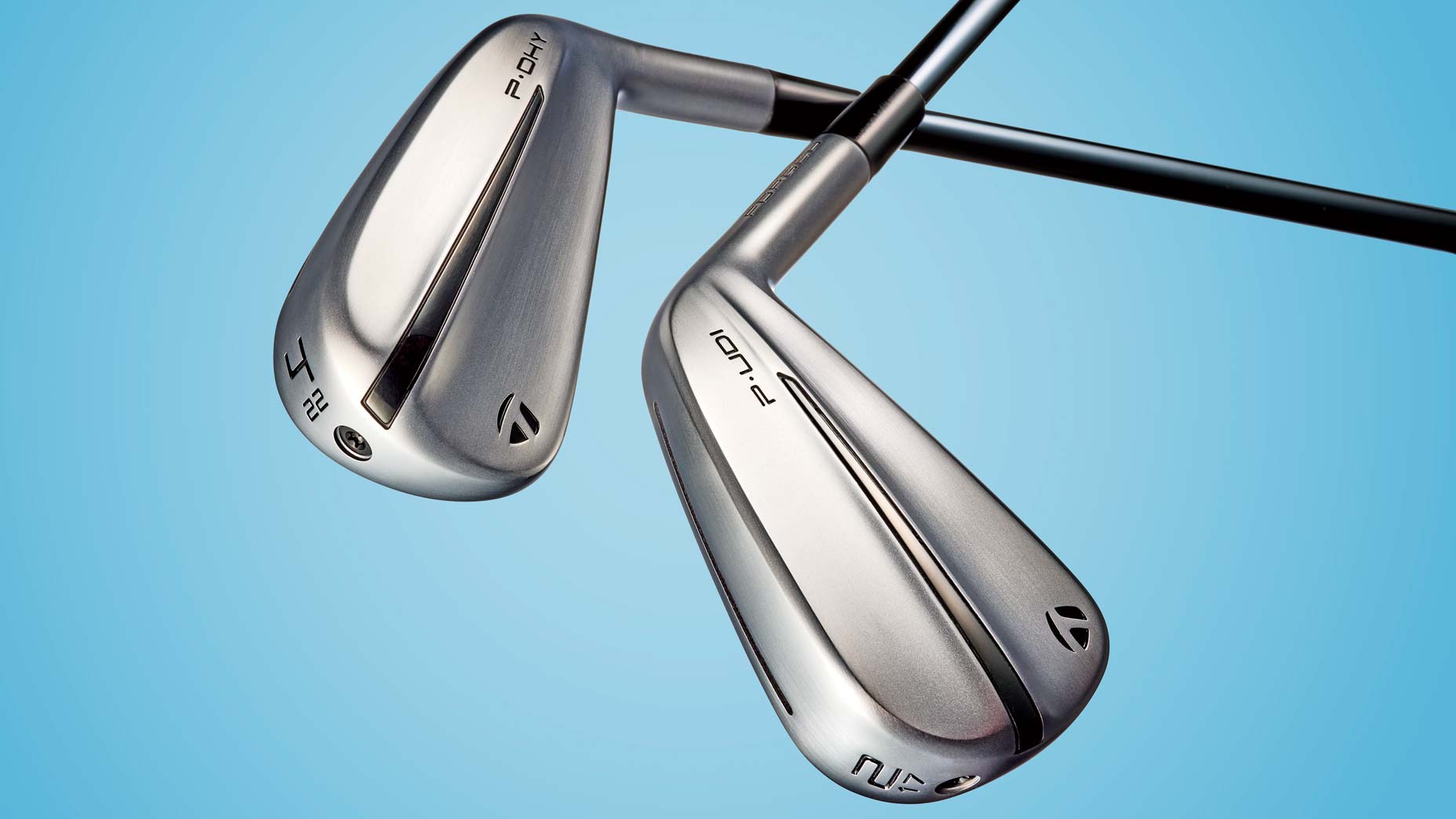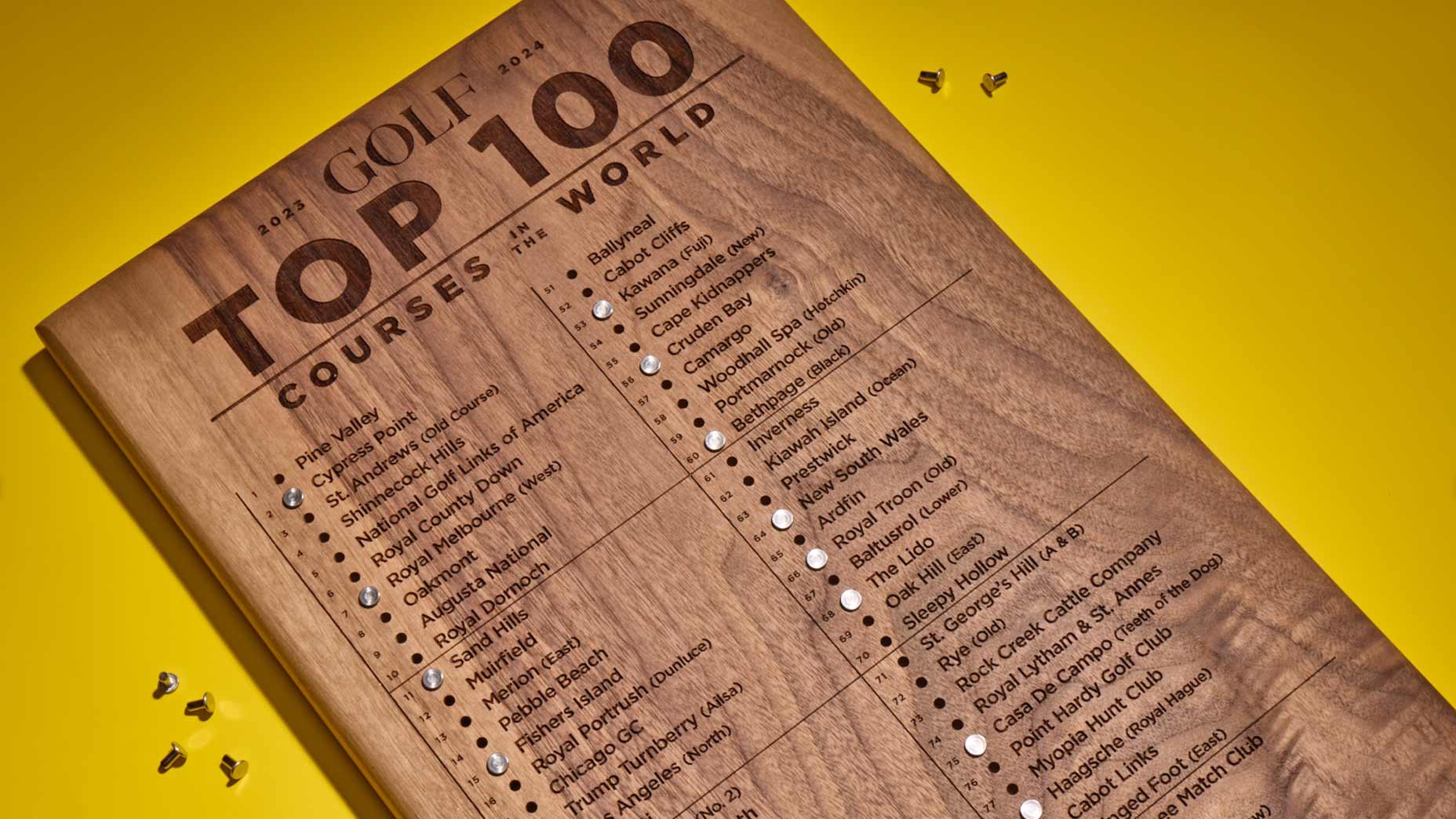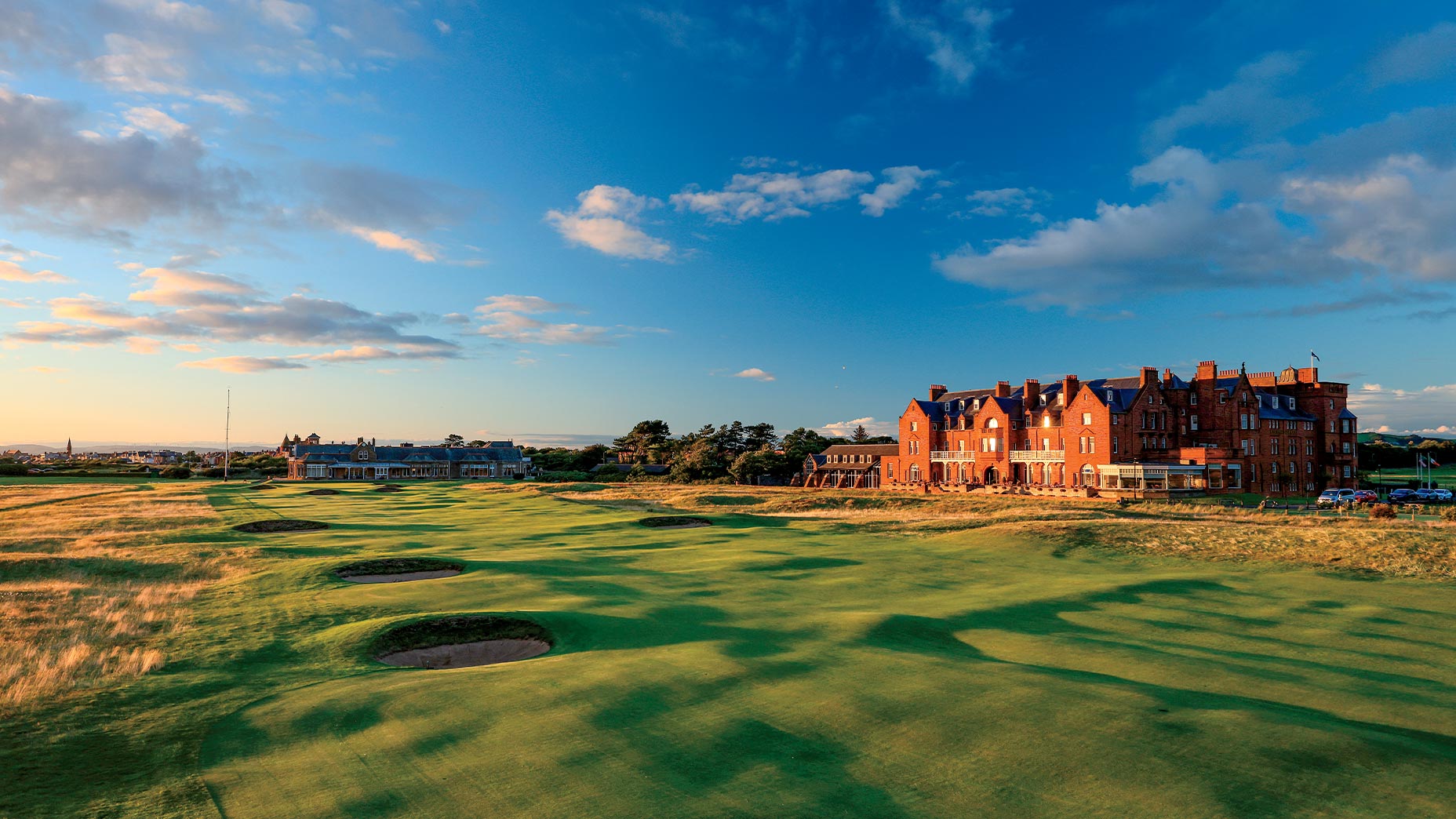Hollywood Hogan: Ben Hogan dominated everywhere in his prime — especially Los Angeles
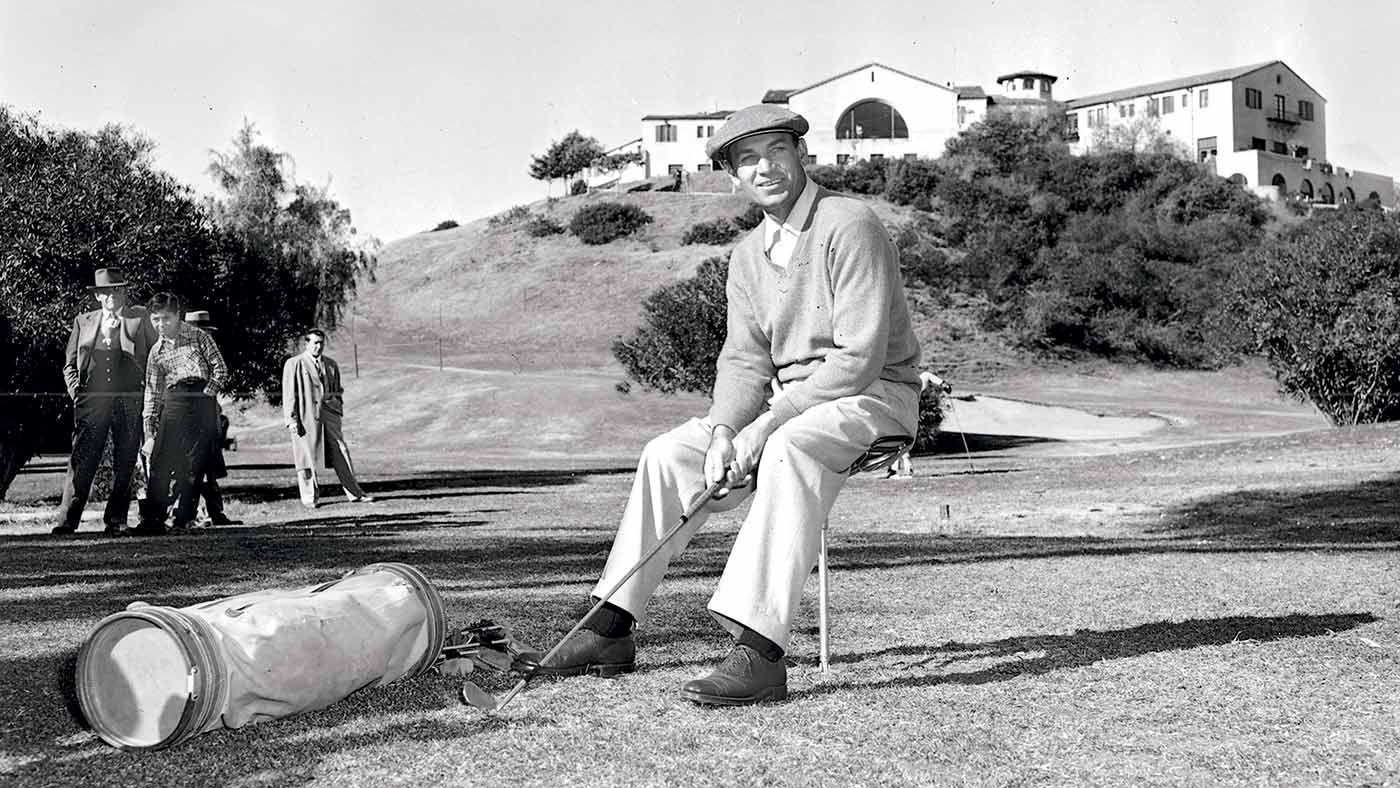
After nearly being killed when his car was hit by a bus in 1949, Hogan spent two months in the hospital. He returned to competition at the 1950 L.A. Open.
Associated Press
Despite the many sobriquets assigned him by the press during his peak years as a player, Ben Hogan was a half inch taller than the average U.S. male at the time (five foot eight and a half inches). He was, however, noticeably leaner than most and described variously by newspapermen as “the tiny Texan,” “golf’s mighty mite,” “little” and “wee.” Owing to the singular intensity with which he pursued the game, he was also said to possess the “eyes and nerve of a professional gambler.” One writer referred to him as “the frigid midget,” and another said he was about “as soft as a hydrant.”
When all was done and said, Ben Hogan would set a still unrivaled standard for ball-striking excellence among golf’s all-time greats and win nine major championships between 1946 and 1953 (including eight in just 11 starts from ’48 to ’53). At the close of his career, Hogan had won 64 PGA Tour events — and he lit it up in the City of Angels, site of this year’s U.S. Open, like no other place.
Ben Hogan arrived at what is now considered his first official PGA Tour event as a 19-year-old high school dropout. In and around Fort Worth, Texas, he’d earned a reputation as a bit of a stick. In the first week of January 1932, however, he was in the field for the Los Angeles Open, a stop on a loosely organized tour that was considered one of the “big money” events on the “winter circuit.”
It’s doubtful anyone who turned out at Hillcrest Country Club in L.A. would have recognized or even heard of Hogan. He certainly wouldn’t have appeared on a path to becoming a legend. He weighed about 130 pounds, and, before quitting school to pursue a career in golf, he wasn’t even considered the best player in Fort Worth, let alone Texas. To be fair, the local competition did include his fellow looper at the nine-hole Glen Garden Country Club, Byron Nelson, along with Jack Grout — who later would become Jack Nicklaus’ swing coach — and Dick Metz, who won 10 Tour events in his career, including eight before Hogan recorded even one. In fact, Hogan wasn’t even considered the best amateur player in Fort Worth before he turned pro, having “received a decisive beating at the hands of Joe Ballard in the [1929] city amateur finals,” according to the Fort Worth Star-Telegram.
To describe Hogan’s professional accomplishments prior to the ’32 L.A. Open as ordinary would be to overstate. Golfdom would be turned on its end in 1930, the year 17-year-old Bantam Ben (another moniker) threw his lot in with the pros — but not by Hogan. The part of the world that cared about golf was focused on Bobby Jones’ run for the Grand Slam. Hogan teed it up for the first time as a pro in February at the Texas Open in San Antonio. He opened with rounds of 78-75 and withdrew.
There is evidence Hogan may have briefly reconsidered the wisdom of trying to make a living at golf. According to the April 1, 1930, edition of the Star-Telegram, “Efforts of Ben Hogan, youthful city golf star, to play in the city amateur aren’t likely to meet with favor of this city’s fairway scalpers. Hogan, who recently competed as a professional in the Texas Open at San Antonio, has announced he will seek to play as an amateur this year.”
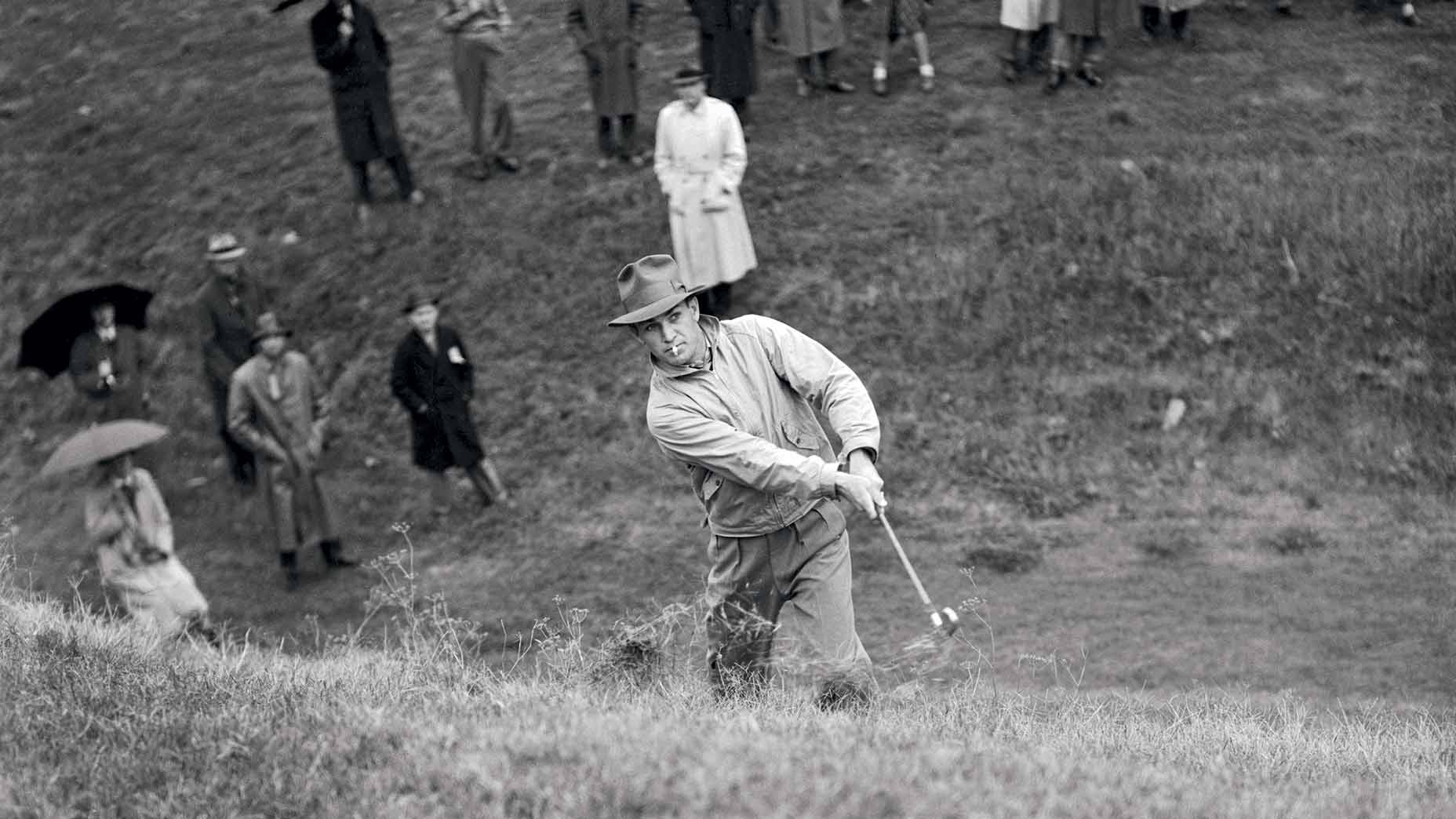
“I didn’t receive any prize money in the tournament and feel I am still an amateur,” said Hogan.
Such thoughts were fleeting, it seems. By June 1930, Hogan was listed by the Star-Telegram as one of “five Fort Worth pros seeking the four places allotted the southern district for the national open at Interlachen in July,” along with Nelson, who would attempt to qualify as an amateur. Hogan and Nelson both failed to advance.
Up to his arrival at Hillcrest, Hogan’s professional success had been local and limited to the types of barnstorming exhibition matches prevalent at the time, where a duo of world-renowned players would take on two yokels. In Hogan’s case, that meant days like one in Fort Worth in November 1931, when he and Ted Longworth tackled Walter Hagen and Joe Kirkwood. (Kirkwood, an Australian, toured the world widely with both Hagen and Gene Sarazen. He was an excellent player and a big draw at exhibitions because he was golf’s first trick-shot artist of any repute.)
According to the Star-Telegram, “Great golf by Ben Hogan at Ridglea Country Club” carried the day against the more famous players. Hogan shot 72 and “dropped birdies on the first two holes to give the locals a lead they never relinquished. All the round Hogan drove brilliantly, and his approaches were deadly.”
At Hillcrest in January 1932, however, something seemed to click for Hogan.
According to the Star-Telegram’s Flem R. Hall, Hogan would have won the L.A. Open’s “undivided second prize if he hadn’t had a bad third round. After getting a 71 and 72 on the first two tours, he ran into bad luck, collected a 79 and then finished with a fine 69. A 72 on the third round would have shoved him into something like $1,500. As it was, he received only $50. An expensive third round.”
The following week, at the Agua Caliente Open in Tijuana, Hogan finished T6 in one of the richest tournaments of the era (a $15,000 purse).
“Hogan in Money” read the Star-Telegram headline. “Ben Hogan, young Fort Worth professional, finished among the money winners with a total of 295, which netted him $200. He led several Texans in the tournament.”
The $250 he won in those back-to-back weeks was the most prize money Hogan would haul in until 1937.
Whatever it was that felt right about playing in Los Angeles stuck with Hogan. He played in the L.A. Open on and off in the ensuing years, finishing T6 in 1939 at Griffith Park’s Wilson Course and T10 at Los Angeles Country Club in 1940 — the year Ben Hogan finally became Ben Hogan by winning his first four individual tournaments.
In 1941, Hogan took third at the L.A. Open at Riviera, with Bing Crosby and 1940 Heisman Trophy winner Tommy Harmon in his gallery.
The following year, the Star-Telegram informed the hometown faithful that “wee Benny Hogan” had triumphed in an 18-hole playoff for the L.A. Open at Hillcrest, overcoming Jimmy Thomson, a “broad-shouldered blond from Del Monte.”

The Los Angeles Times reported that “Hogan had four birdies as his iron shots rifled down the fairways,” and “the slim, ice-nerved dynamo took down $3,500 and $400 more as his 25% cut of playoff gate.”
Hogan needed a birdie at the final hole to pull off the win, his first in a “big money” tournament. The hole played at 500 yards even, and Hogan said, “I figured Jimmy might reach that green in two and probably would have a birdie, so it looked like I’d better do the same.” Both came up short on 2-iron second shots, but “then Hogan selected a wedge for his third shot, hit it and was immediately cut off from the green by a wave of charging humanity that fought for vantage points. The ball rolled dead for the cup, stopping just eight inches beyond.”
Unable to see the outcome of the shot through the 3,500 or so bodies swarming around him, Hogan said, “I thought it would be pretty close. It just about had to be. But I was glad to see it up there like that.”
After the win, Hogan apologized to reporters for what he feared was faulty grammar.
“You see, I used to play hooky from school to play in tournaments,” he said. The writers agreed no apology was necessary.
From that point on, Hogan owned L.A. In 1946, he finished second in the L.A. Open at Riviera and won the inaugural Golden State Open at California Country Club.
It was at Riviera that Hogan cemented his relationship with golf in L.A., winning two L.A. Opens and one U.S. Open there in 18 months. The third of those wins, the 1948 U.S. Open, was a record-setting eight-under performance for the national championship that went unmatched until Nicklaus tied it in 1980 and Tiger Woods finally broke it in 2000.
To round out his L.A. résumé, Hogan also won the 1948 Glendale Open and the 1949 Long Beach Open.
With success, Hogan became a favorite of writers. No one mentioned how little he was anymore. Instead, they wrote things such as “his perfect teeth are set in a strong, square jaw, his eyes are clear and friendly, and, in fact, he passed several screen tests in Hollywood.”
The titans of Tinseltown always like a good underdog story, and the man of many monikers certainly fit the bill.


